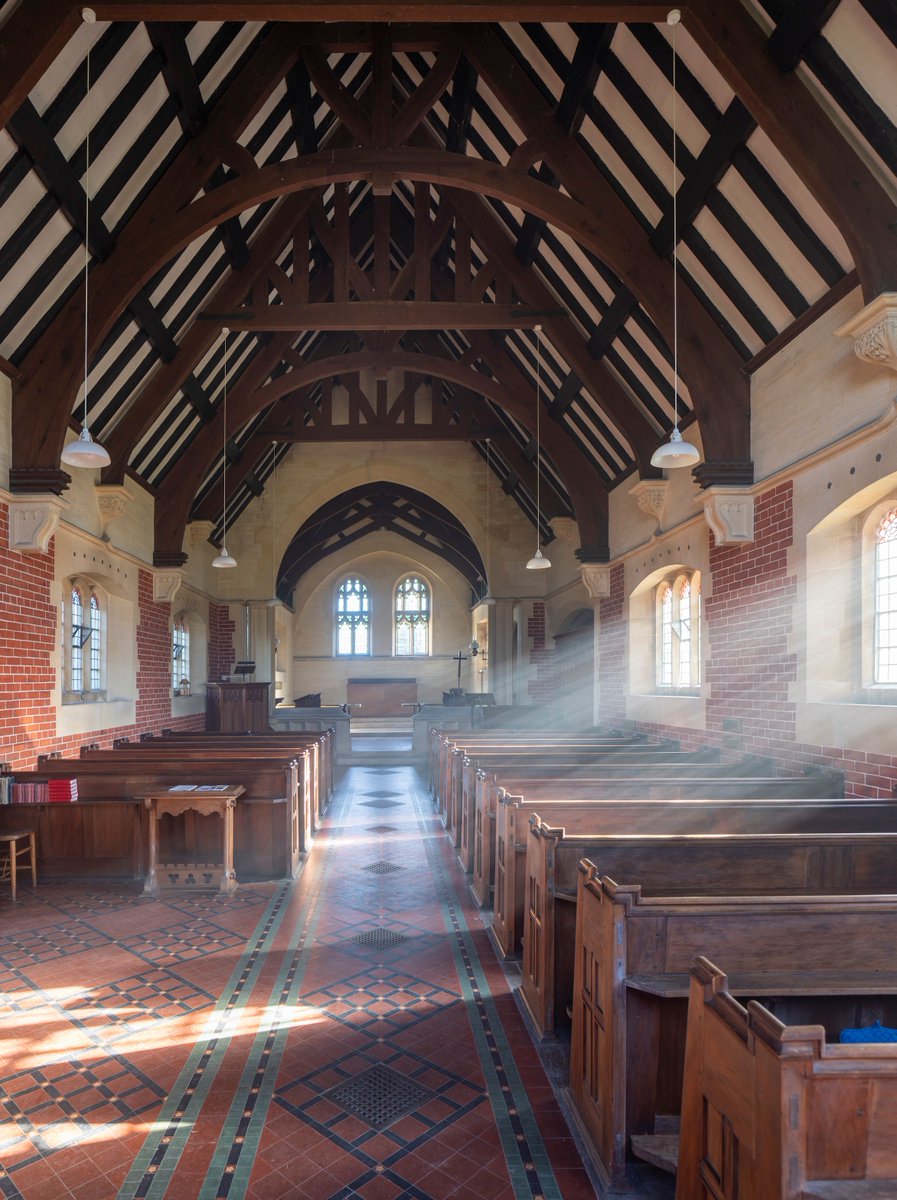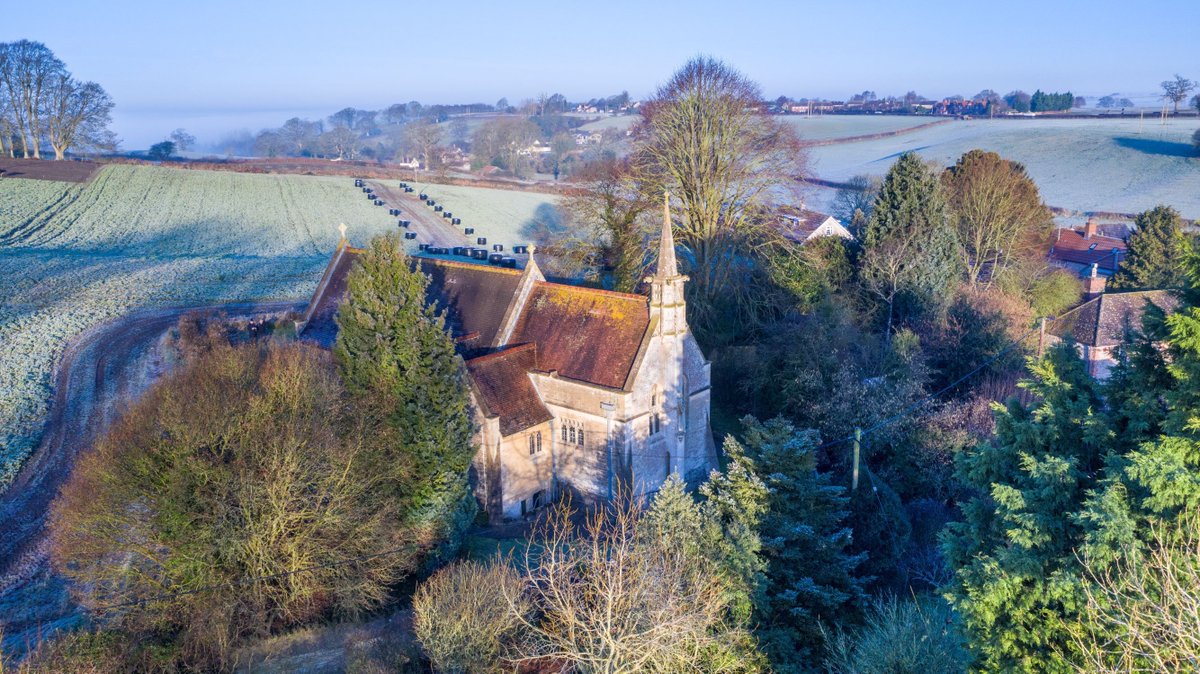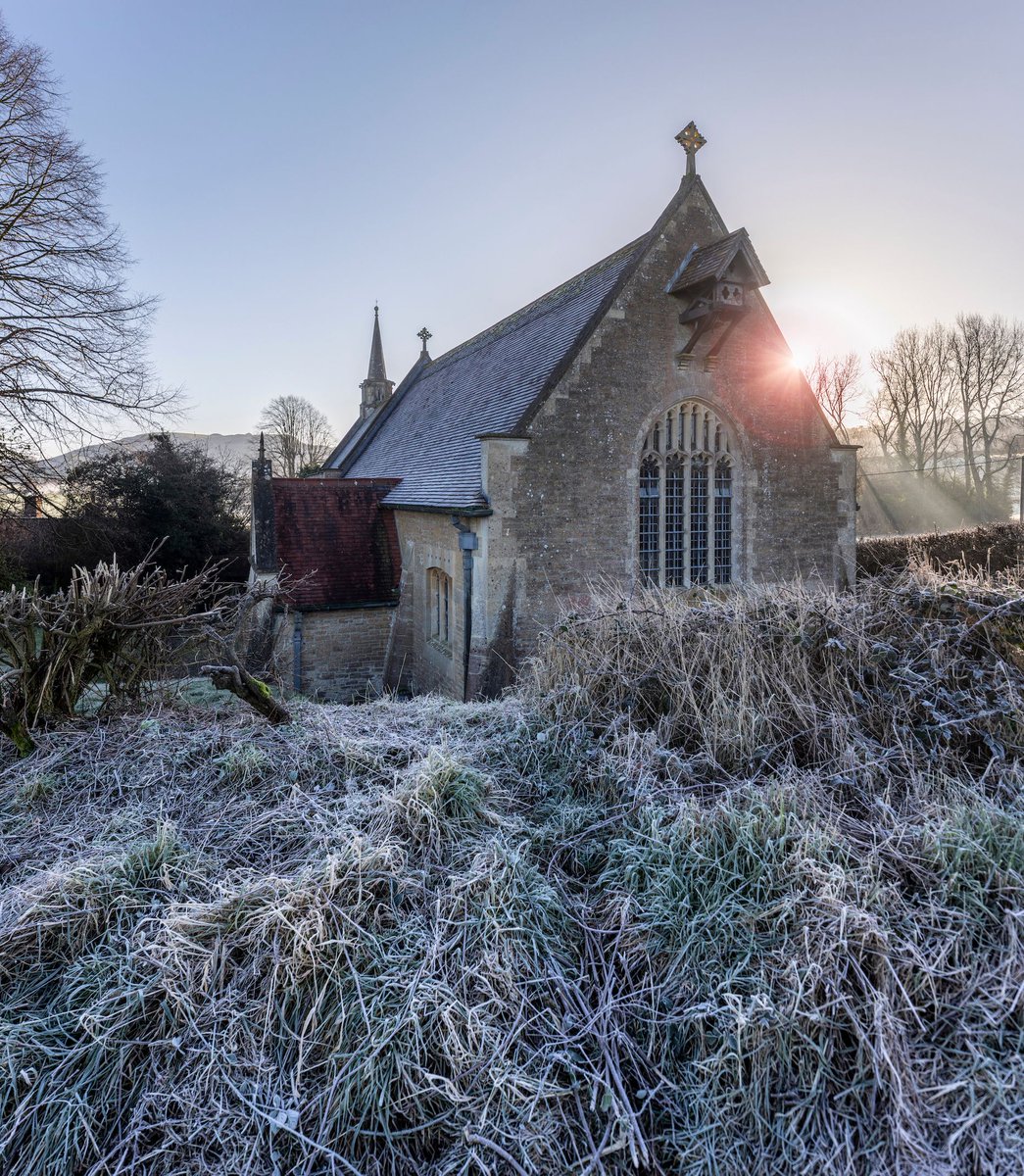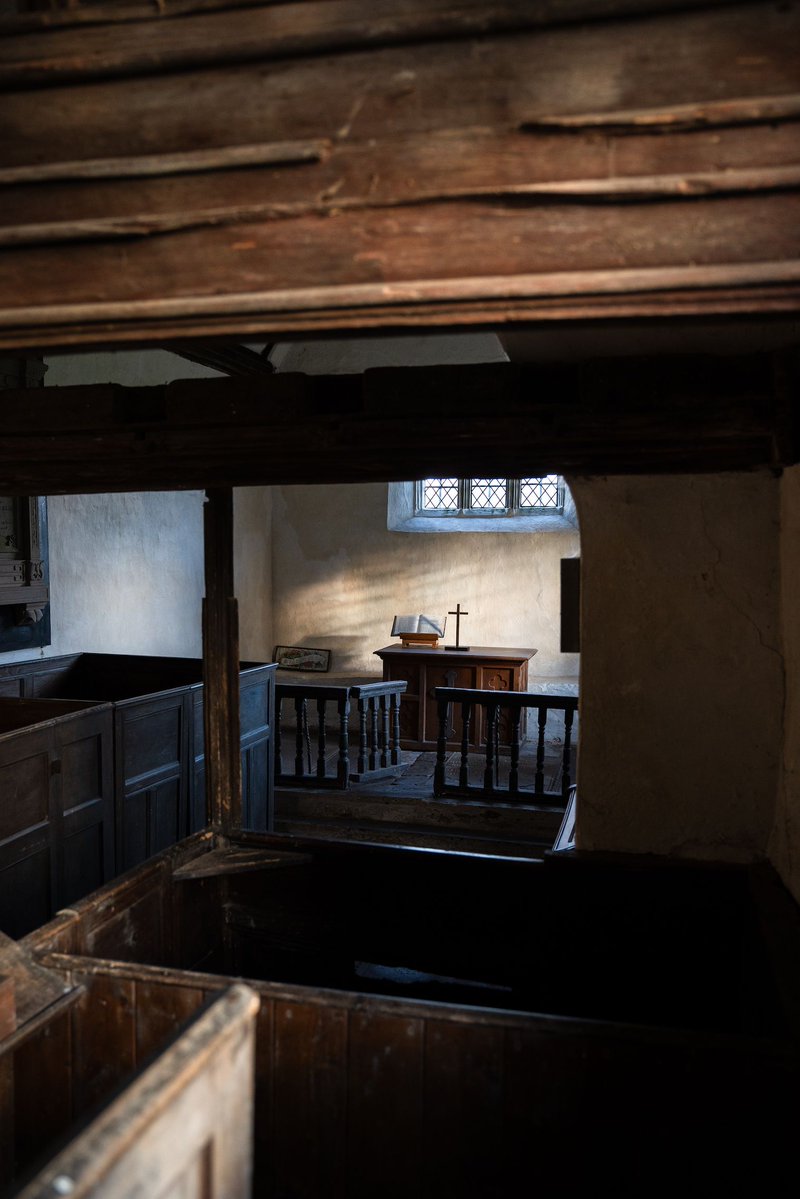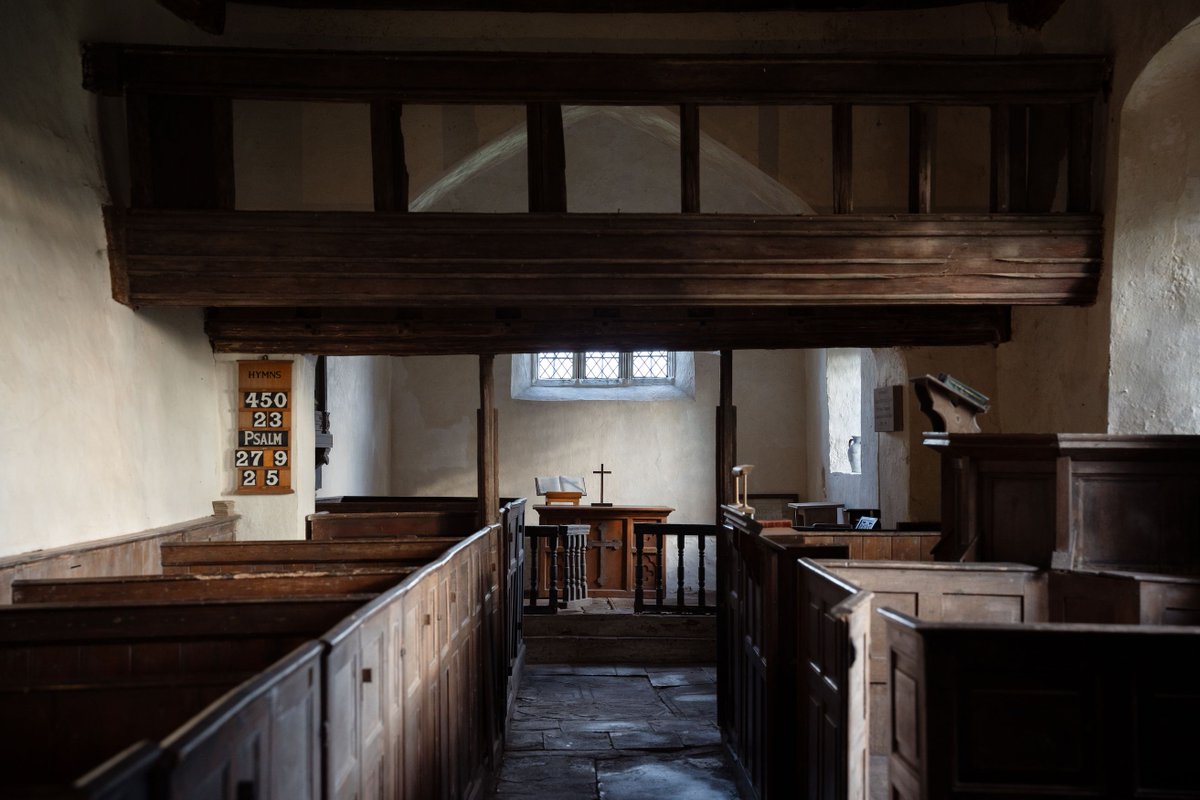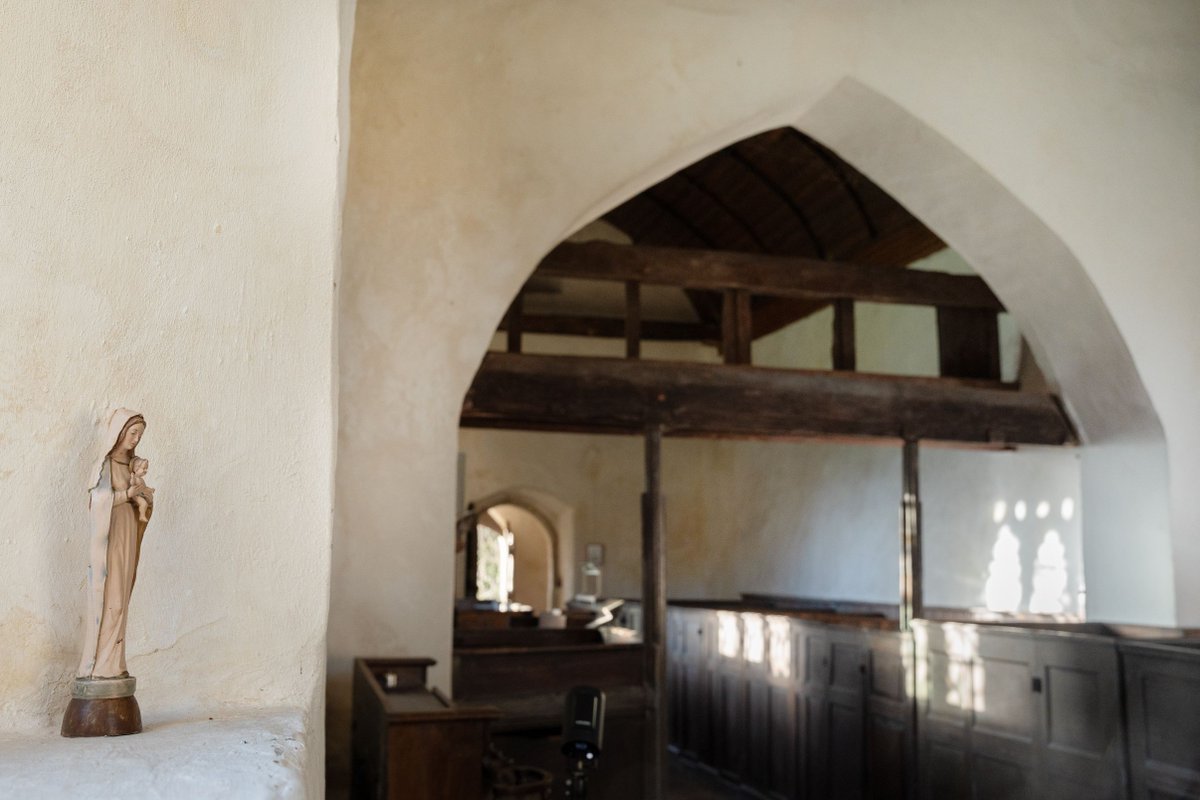At the side of an unclassified road deep in the Golden Valley is a building that for all the world looks like an old barn. In actual fact, it’s a 12th century chapel. Built by Urri de la Hay, it’s the earliest purpose-built chapel to a castle in Herefordshire.
#thread
#thread

The area, and the chapel, is called Urishay – after Urri. Beyond the Chapel, barely visible, are the remains of a motte and bailey mound where the castle it served once stood.
2/7
2/7
The chapel itself is devoid of any architectural decoration. A medieval altar table with five consecration crosses is the only adornment.
3/7
3/7

Sometime after the 17th century, the chapel fell into disuse and was subsequently home to a blacksmith’s forge, a carpenter’s workshop and even a dog kennels. Just over 100 years ago, the chapel was ruinous.
4/7
4/7

In 1914, the de la Hay family – the descendants of the family that originally built the chapel and castle – set about restoring the church for public worship.
5/7
5/7
But 1914 brought the Great War, and by the early 1920s the chapel had closed again. By 1949, it was almost entirely derelict with leaning walls and gaping holes in the roof.
When we took it on in 1978, we had to rebuild substantial sections of the chapel to prevent collapse.
6/7
When we took it on in 1978, we had to rebuild substantial sections of the chapel to prevent collapse.
6/7

In the 1980s, during our repairs, archaeologists found several infant burials before the altar. In the 800-year history of this chapel, not a single adult was buried on the site. What unknown pain must lie in this roadside chapel overlooking the Black Mountains of Wales.
7/7
7/7

• • •
Missing some Tweet in this thread? You can try to
force a refresh





